

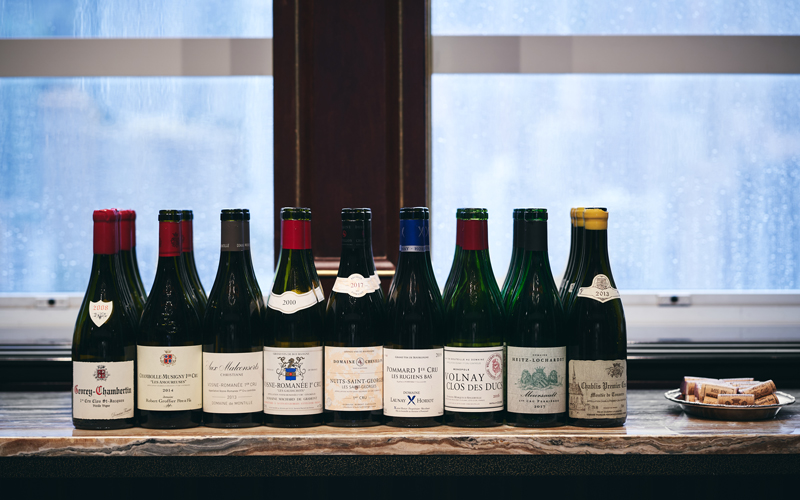
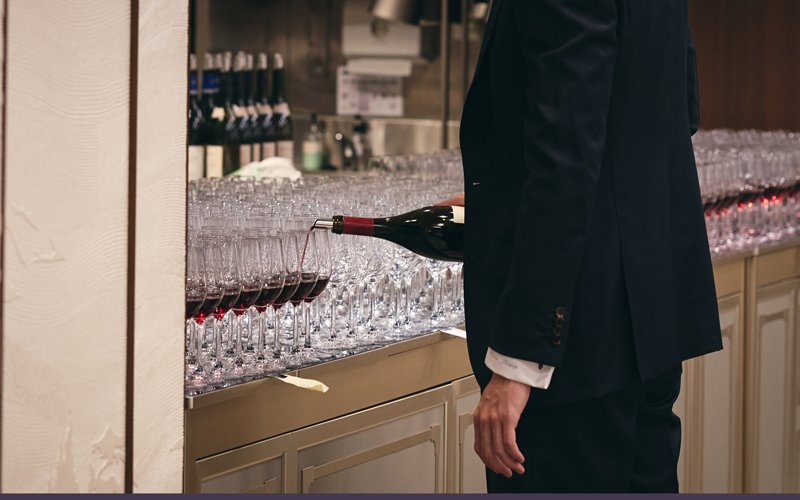
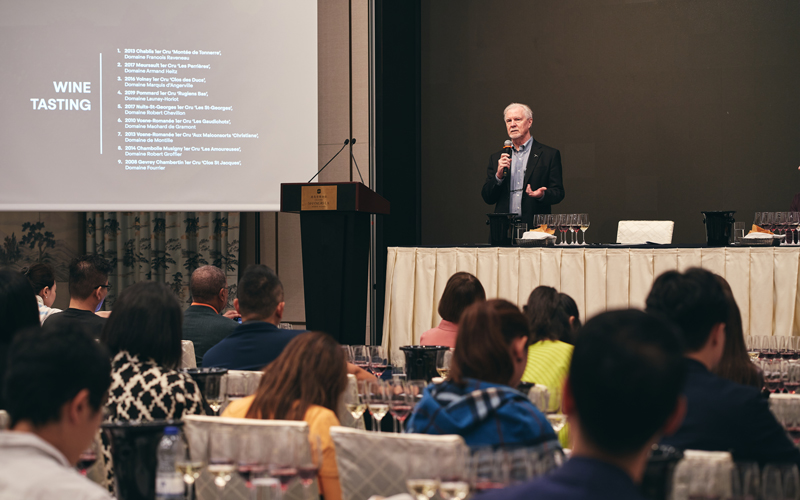
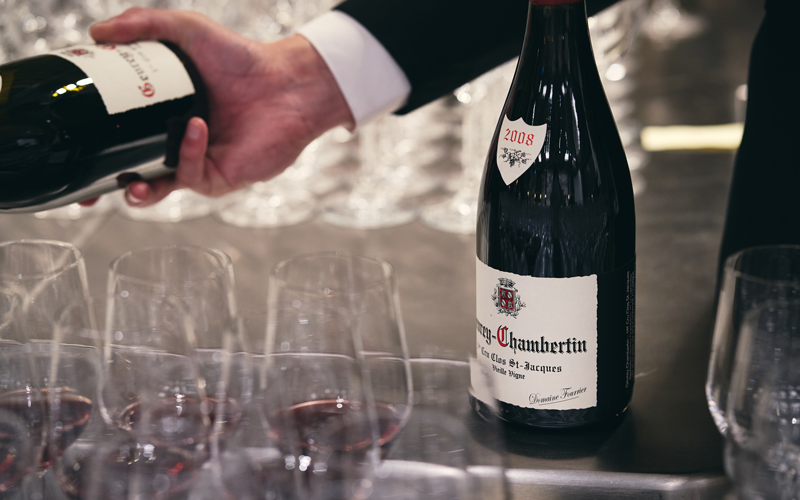
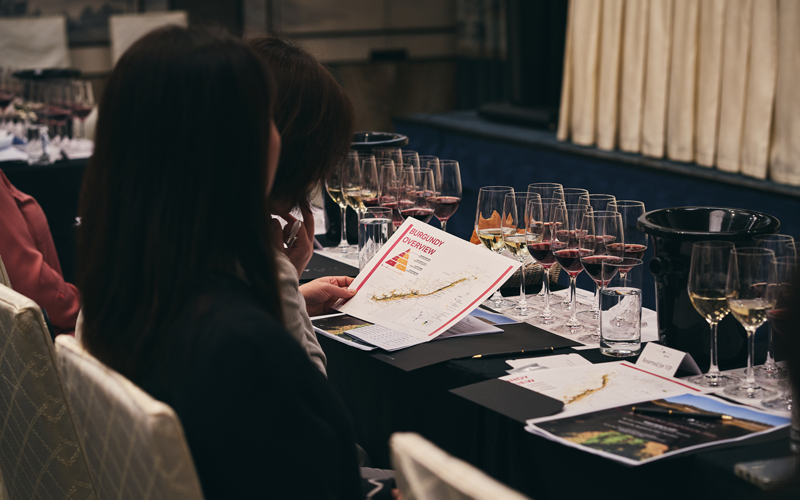
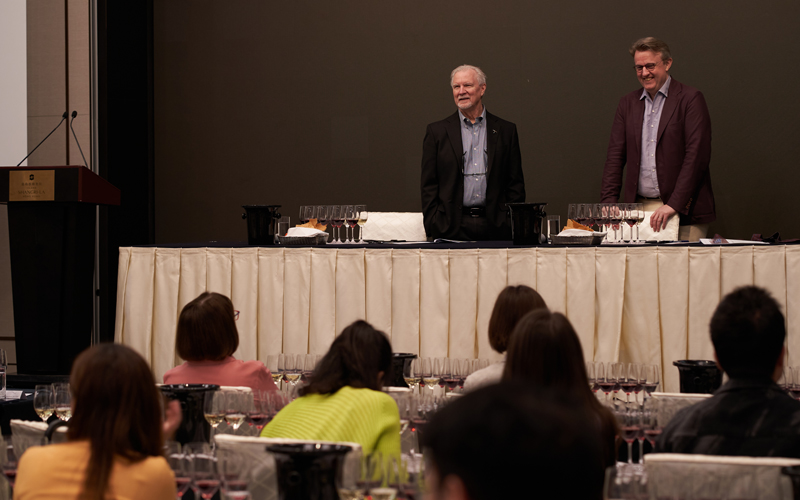
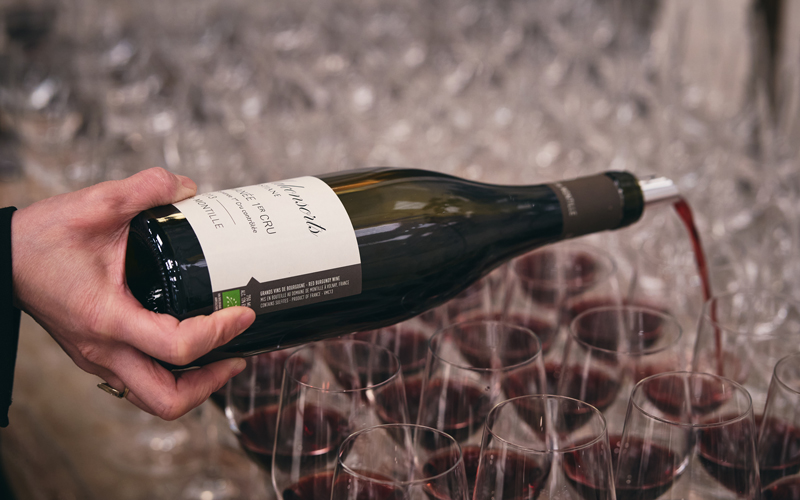
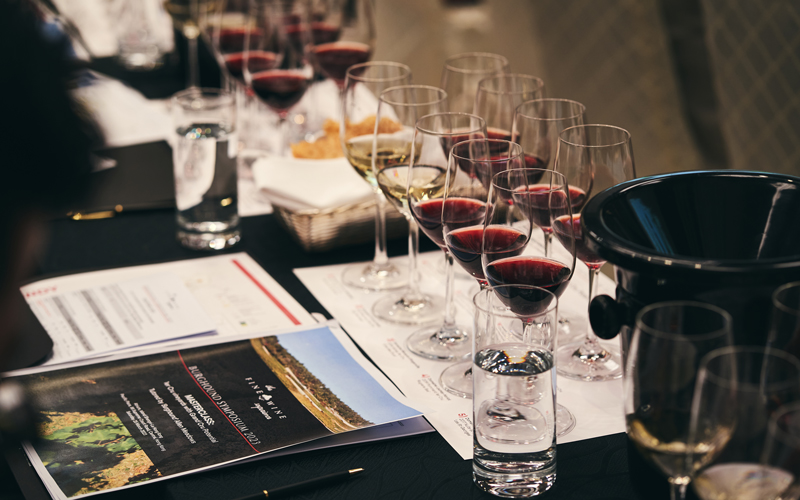
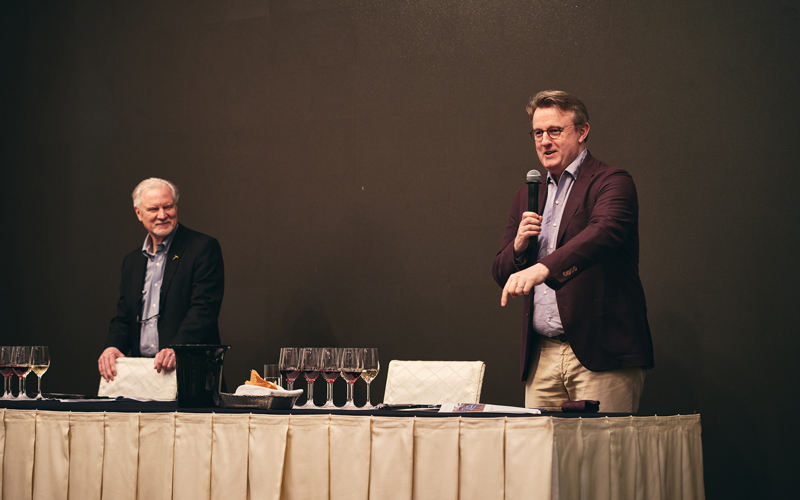
During last month’s The Fine Wine Experience Burghound Symposium the most popular masterclass was called Premier Cru Vineyards with Grand Cru Potential – a statement, but really posed as a question, for our speaker Allen Meadows, but also for each of us in the room as we tasted through nine examples with the potential for “yes”.
During we two hour seminar we sniffed and sipped our way through, looked at the maps and materials, while Allen, it his inimitable style, and without the aid of notes, spoke for two hours straight on the subject, demonstrating a truly encyclopaedic depth of mastery in the subject. I wrote a lot of notes!
There’s simply too much to share, so I’m going to distil some of the key points here.
First though, we should visit quickly the hierarchy so we have an idea of what we are talking about here. It’s important to understand that the classifications belong to the land not the producer. A grand cru is a grand cru even if it made badly for decades on end. (It’s different in Bordeaux, for example, where classifications have generally followed the quality of châteaux – a combination therefore of the good fortunes of terroir, and the quality of the work done.) Burgundy vineyards have names, and are strictly plotted and registered on an official government map, and can be finely split amongst multiple owners1, each of whom has the right to make a wine from that vineyard bearing the vineyard’s name. Richebourg, for example, has 11 owners, so each can make a “Richebourg”, or sell their grapes, must, or wine to a négocient who then has the same right to the Richebourg name for that wine.
Each vineyard also sits in a classification hierarchy – grand cru at the top (1.4% of the total), 1er cru next (10.2% of the total), village level after that (37.3%), and regional level at the bottom (51.1%). (It’s all nicely summarised in a pyramid here). At village level, and 1er cru level, the vineyard name (so long as its not blended with wine from another vineyard) is appended to the village name, e.g. Vosne-Romanée 1er Cru ‘Aux Brûlées’ (1er Cru), or Vosne-Romanée ‘La Colombière’ (village). But grand cru vineyards are considered important, special and famous enough to ‘lose’ their village name reference, and be known solely by their vineyard name, e.g. Richebourg, Montrachet, etc. They are the Adele, Tupac, Drake, and Rihannas of the Burgundy world! (Hmmm… perhaps there’s room for a category higher still, like ℳ , the vineyard formerly known as Musigny. But I digress…)
Have any premier crus been upgraded to grand cru before? They have, and here’s the first clue as to how another one might get there. Clos des Lambrays was upgraded to grand cru in 1981 and La Grande Rue was upgraded in 1991. In both cases, its widely believed that had the owners of the day applied for grand cru status for these vineyards in the 1930s when the classification was created, they would have got it. It helps that La Grande Rue is at the ‘right address’ – squeezed in between La Tâche on its southern side and La Romanée, La Romanée-Conti, and and Romanée-St-Vivant to its immediate north. Likewise Clos des Lambrays sits in the grand cru mid-slope ‘strip’ between Clos de Tart, and Clos St Denis. As Allen explained, INAO, who is responsible for these upgrades, is mainly considering “the dirt”, not the wine. The wines made from La Grande Rue (monopole of Domaine Lamarche), and Clos des Lambrays (then owned almost entirely by the Saier family), were not particularly good wines at the time of the upgrade.
It’s an interesting point, because when we think of Gevrey-Chambertin 1er Cru ‘Clos St Jacques’, few would argue against it being upgraded to grand cru on the basis of quality. It’s a consistent top performer, and tasting in some of the five domaines that make it, some will show Clos St Jacques after some of the Gevrey grand crus they make. But, Clos St Jacques is located in the Combe Lavaux, in a more northern sector. All of Gevrey’s grand crus are further south, in the same mid-slope strip as Chambertin and Chambertin Clos de Bèze, and touch one of those two vineyards.
It gets trickier still in villages like Meursault, Volnay, Pommard, and Nuits-St-Georges, who for reasons either political or economic, did not claim any grand crus at all in the original 1930s classifications. To upgrade one (or more) now is to create a precedent, and with the economic situation today in Burgundy almost the opposite to that of the 1930s, there are many valuable interests at stake. How do you get some consensus amongst owners around what to apply for? In Pommard, the answer was to apply for Les Rugiens – the standout vineyard most would agree on, but also all of Epeneaux (Les Grandes-, Les Petits-, and the Clos des Epeneaux within). As Allen said, “That’s too much. The quality varies. This one for all, all for one approach would mean some 30ha of land upgraded.” In Allen’s view the lower portion of Rugiens – Rugiens-Bas – is probably most worthy of an upgrade.
The deeper question though is perhaps not how a 1er cru could be upgraded, but why it should. The owners of the grand crus don’t want their “club diluted” as Allen put it. And on the other hand, an upgrade would lead to higher prices to the consumer. “If prices go up 33%-50%, and we have the exact same owners, have we seen an increase in the quality of the wine?” The argument can be made, he feels, if the upgrade draws attention to the quality of a terroir, and that in turn supports higher quality work that the consumer can benefit from. But then how do you choose? In Nuits-St-Georges, the candidate (long into its application to INAO – these take many years) is Les St Georges. It is, after all, the vineyard the village of Nuits chose to append to become Nuits-St-Georges. “But I would argue that Les Cailles, and Vaucrains might be equal to that, and the best one is in fact Boudots!” (Boudots is of course a cheeky one to name. It’s great, but it sits right at the northern edge of Nuits, on the border with Vosne, abutting Malconsorts, so hardly a good choice for Nuits pride!).
To all this I would add two points. Firstly, when a vineyard really stands out for quality, the market has a way of figuring this all out without the aid of the classifications. “Amoureuses” is referred to by that name alone by most Burgundy enthusiasts – Chambolle-Musigny 1er Cru ‘Les Amoureuses’ is not needed. It’s also more expensive than most domaine’s Bonnes-Mares Grand Cru, and even some Musigny Grand Cru. It’s a similar story for “Clos St Jacques”. Conversely, some of the red Corton Grand Cru, while good, is considered more in line with 1er cru, and market prices reflect this.
Secondly of course, the quality of the producer makes an enormous difference. While the quality of wines within a domaine’s range typically follow the classification hierarchy uncontroversially, the difference in quality between domaines can be stark. In other words, village level wine made very well at an elite domaine can offer better quality in the glass than a grand cru farmed and made poorly somewhere else. Scan any price list and you will see this fairly easily too!
Still, going deeper into this story reveals a lot about Burgundy, which Allen illuminated well. It’s also a nice excuse to taste through wines from nine highly regarded 1er cru vineyards! At the end of the masterclass I asked everyone to vote – “based just on the examples you have tasted here today, which of these premier crus would you upgrade to grand cru?”. Not exactly scientific, and my counting of hands amongst the 90 participants was a bit guesstimatish, but it will give you a sense of what popularly impressed for these 1er crus, from these producers and vintages.
In your experience, which 1er crus do you think are worth upgrading to grand cru? This could be a fun theme for your own dinner with friends. Below you will find our current stocks from these 1er cru vineyard candidates. But first, my tasting notes – and the votes – on the wines we tasted.
1Jasper Morris MW (2021) Inside Burgundy: The Second Edition, p316.

Pale straw-gold; fine, ripe with a cool classic seaside note, it’s bright and and fresh with a slightly lactic/yoghurty note the palate suggesting a lot of malic acid converted in this cool vintage; the palate is juicy, fleshy, super bright, full and rich with nervy acidity. It’s clear, coherent and delicious – a really appetising high grade Chablis, and a level above vintage expectation. 92
80 participants would upgrade this to grand cru, based on this example.
Pale, bright and clear; a fine mineral nose, very pure and noble expression; juicy, tight and focused on the palate, there’s some weight to this, its sapid, with a salty-edged mineral depth. A very fine, chiselled, classic Perrières, showing the terroir well, still young. 94
50 participants would upgrade this to grand cru, based on this example.
Fine ruby, clear and bright with just a touch of colour evolution showing at the rim; a lovely perfume here – roses and lilacs, it’s pure, fresh and seductive, classic Volnay; fine, tight, mineral and juicy on the red-fruited palate, it is pure and elegant. The impression is taut, finely muscular and high in energy like a racehorse. Promising. 93
4 participants would upgrade this to grand cru, based on this example.
Bright full mid-ruby; sweet, juicy nose of fresh, darker, slightly spicy fruit; the palate too is juicy, spicy, silky-textured, fleshy, sapid, aromatic and long. It’s simply superb. There’s a real equilibrium, energy, velety depth within the structure, fine minerality and length. Great potential here – an outstanding Rugiens Bas. 96
57 participants would upgrade this to grand cru, based on this example.
Bright fresh clear ruby; fine perfume, spice, earth, jellied pure red fruit on the nose; fine and elegant, palate-coating in its fruit, both red and dark berry fruit here, but predominantly red. It’s long, fine-textured, there’s a note of licorice, it’s mineral-laden and there’s also a savoury meaty element to this. It’s a lovely balanced wine showing promising depth and complexity. 93
9 participants would upgrade this to grand cru, based on this example.
Clear, mature faded garnet; the nose is leathery, spicy and mature, and a bit simple considering the terroir; the palate is tight, dry, lean, lacking in fruit and flesh, and the tannins are drying. An austere mineral style that is ok to drink, but it is not going anywhere, and is a disappointment relative to the appellation and level. 86
14 participants would upgrade this to grand cru, based on this example.
Bright clear ruby, fine hue; this is fine, subtle and detailed in aroma, low key, still fairly closed; fine, elegant, taut and compact on the palate, with a fine mineral tone and shape and sufficient elegant fruit to continue to age well, long fine red fruit expression on the finish. Classic finely-structured Malconsorts in need of several more years of cellaring, but the potential is there. 94
23 participants would upgrade this to grand cru, based on this example.
Bright ruby fresh colour; a fine, elegant and very pretty aroma, mineral, really fragrant and complex with a touch of spice and wildness to it; sapid on the palate, mineral fine-boned feel yet there is also some glycerin and melting feel to it, this is still young in evolution, but it is aromatic and approachable. 94
63 participants would upgrade this to grand cru, based on this example.
Somewhat dull in appearance, garnet, and showing some colour development; a mature nose, not showing much verve, but there are some floral notes giving a little lift; tight, elegant, it lacks a little in the mid-palate for Clos St Jacques, and lacks the oftentimes grand cru stature, though the finish is long. A bit of a subdued showing for this wine. 89
20 participants would upgrade this to grand cru, based on this example.
